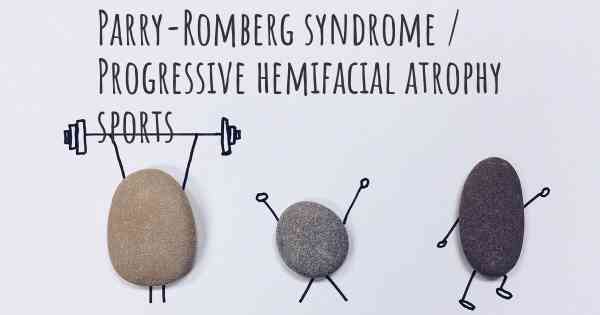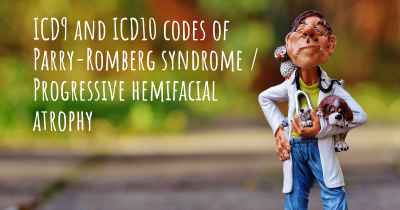Is it advisable to do exercise when affected by Parry-Romberg syndrome / Progressive hemifacial atrophy? Which activities would you suggest and how intense should they be?
See if it is advisable for people with Parry-Romberg syndrome / Progressive hemifacial atrophy to practice sports and which ones are the most recommended if you have Parry-Romberg syndrome / Progressive hemifacial atrophy

Exercise Recommendations for Parry-Romberg Syndrome / Progressive Hemifacial Atrophy
Parry-Romberg Syndrome, also known as Progressive Hemifacial Atrophy, is a rare disorder characterized by the progressive wasting away of the tissues on one side of the face. This condition can lead to various physical and psychological challenges for individuals affected by it. While exercise may not directly treat or reverse the symptoms of Parry-Romberg Syndrome, it can still play a beneficial role in overall health and well-being. However, it is important to approach exercise with caution and consider the specific needs and limitations of each individual.
Benefits of Exercise
Engaging in regular exercise can provide numerous benefits for individuals with Parry-Romberg Syndrome. These benefits include:
- Improved cardiovascular health: Aerobic exercises such as walking, swimming, or cycling can help improve heart and lung function, enhancing overall cardiovascular health.
- Enhanced mood and mental well-being: Exercise releases endorphins, which can help reduce stress, anxiety, and depression, promoting a positive mental state.
- Increased strength and flexibility: Strengthening exercises can help improve muscle tone and flexibility, which may be particularly beneficial for individuals experiencing muscle atrophy.
- Weight management: Regular physical activity can assist in maintaining a healthy weight, which is important for overall health and reducing strain on the body.
- Improved bone density: Weight-bearing exercises, such as walking or weightlifting, can help strengthen bones and reduce the risk of osteoporosis.
Exercise Recommendations
When considering exercise for individuals with Parry-Romberg Syndrome, it is crucial to consult with a healthcare professional or physical therapist who can provide personalized guidance based on the individual's specific condition and needs. However, here are some general exercise recommendations:
1. Low-Impact Aerobic Exercises:
Engaging in low-impact aerobic exercises can help improve cardiovascular health without placing excessive strain on the body. Some suitable options include:
- Walking: A simple and accessible exercise that can be tailored to individual fitness levels.
- Swimming or water aerobics: These activities provide a low-impact workout that is gentle on the joints and muscles.
- Cycling: Whether outdoors or using a stationary bike, cycling can be an effective cardiovascular exercise.
2. Strength and Flexibility Exercises:
Performing exercises that target muscle strength and flexibility can help improve overall physical function. It is important to start with low resistance and gradually increase as tolerated. Some suitable exercises include:
- Resistance band exercises: These exercises can be performed to target specific muscle groups and improve strength.
- Gentle yoga or stretching routines: These activities can help improve flexibility and promote relaxation.
- Bodyweight exercises: Simple exercises such as squats, lunges, and modified push-ups can help improve strength.
3. Balance and Coordination Exercises:
Practicing balance and coordination exercises can help improve stability and reduce the risk of falls. Some suitable exercises include:
- Standing on one leg: This exercise can be performed with support if needed, gradually increasing the duration and difficulty.
- Tai Chi or Qigong: These mind-body exercises focus on balance, coordination, and gentle movements.
- Bosu ball exercises: Using a Bosu ball can challenge balance and stability in a controlled manner.
Exercise Intensity
The intensity of exercise should be individualized based on the person's overall fitness level, health status, and specific limitations. It is important to start slowly and gradually increase the intensity and duration of exercise as tolerated. Listening to the body and avoiding overexertion is crucial to prevent injury or exacerbation of symptoms.
Important Note: Individuals with Parry-Romberg Syndrome may have specific considerations and limitations due to their condition. It is essential to consult with a healthcare professional or physical therapist who can provide personalized exercise recommendations and ensure safety.
Posted Mar 4, 2017 by Hannah 1050
All other exercise is the same as for anyone else.
Posted Mar 4, 2017 by Barbara 1000
Posted Oct 26, 2017 by Erika 200








